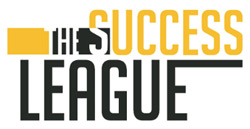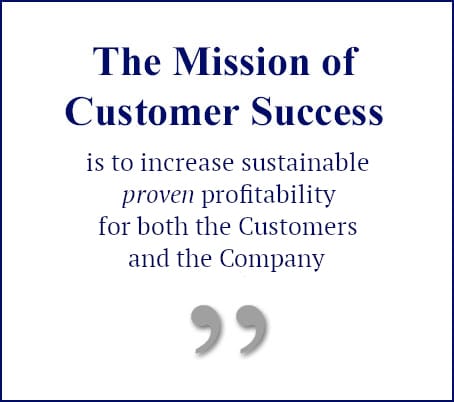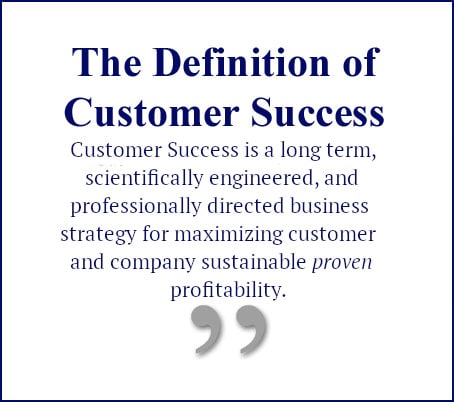 From the very beginning of the industry, all enterprise software companies had a similar organizational structure for post-sale customer relationship maintenance. Everyone did some form of implementation teams, training teams, support groups and account management roles. Each department had its assigned mission and deliverables, but none of the performance metrics for those teams took into consideration the customers’ perceptions of value-received.
From the very beginning of the industry, all enterprise software companies had a similar organizational structure for post-sale customer relationship maintenance. Everyone did some form of implementation teams, training teams, support groups and account management roles. Each department had its assigned mission and deliverables, but none of the performance metrics for those teams took into consideration the customers’ perceptions of value-received.
Which software company established the very first named Customer Success group? (Hint: It wasn’t Salesforce.) Teaser: No, it wasn’t a SaaS/Cloud vendor. But that beginning did share some common ground with all of the Customer Success teams that have followed it, and those yet to come into being. Senior Management recognized that retaining customers was vital to the future of the company, and that retention could not be taken for granted. The burden of being successful in using the product had to be shared between vendor and customer.
 In 1996, a CRM company realized that, industry-wide, enterprise CRM systems had an unfortunately high failure rate. While the bulk of the vendor’s profits from the sale of the perpetual licenses was taken at the signing of the contract, failed implementations not only endangered future sales, they also resulted in strategically significant losses in expected support and maintenance fees. For this company, whose goal was to have 100% of their customers be willing to serve as references at any time, and whose sales teams regularly tossed the entire customer list on the table in front of qualified prospects, inviting them to call anyone they wished — there could be no such thing as a failed implementation or a dissatisfied customer. The real driver, however, was to grow the relationship and revenues post-sale. The traditional organizational structure wasn’t enough, a new approach was needed.
In 1996, a CRM company realized that, industry-wide, enterprise CRM systems had an unfortunately high failure rate. While the bulk of the vendor’s profits from the sale of the perpetual licenses was taken at the signing of the contract, failed implementations not only endangered future sales, they also resulted in strategically significant losses in expected support and maintenance fees. For this company, whose goal was to have 100% of their customers be willing to serve as references at any time, and whose sales teams regularly tossed the entire customer list on the table in front of qualified prospects, inviting them to call anyone they wished — there could be no such thing as a failed implementation or a dissatisfied customer. The real driver, however, was to grow the relationship and revenues post-sale. The traditional organizational structure wasn’t enough, a new approach was needed.
1996-1997: A CRM Company called Vantive
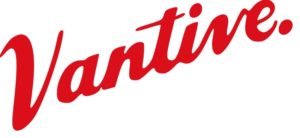 John Luongo, Vantive’s CEO, had encountered a very innovative usage of his company’s application by a customer, and wanted to bring that innovation back to Vantive. He hired Marie Alexander, who had created the new approach, to come and run Vantive’s services group. In 1996-1997, Marie created a new department, called Customer Success, and began introducing the team to prospects prior to the signing of the contract. “This is the Customer Success team that’s going to ensure that you’re successful in using Vantive. And their compensation is based on your success.”
John Luongo, Vantive’s CEO, had encountered a very innovative usage of his company’s application by a customer, and wanted to bring that innovation back to Vantive. He hired Marie Alexander, who had created the new approach, to come and run Vantive’s services group. In 1996-1997, Marie created a new department, called Customer Success, and began introducing the team to prospects prior to the signing of the contract. “This is the Customer Success team that’s going to ensure that you’re successful in using Vantive. And their compensation is based on your success.”
While not every Vantive customer was assigned a Customer Success Manager, the process began with the question: “How are you going to define your success? What do you expect from us?” The next step was to document those expectations in the Vantive system, and to introduce the Customer Success Manager who would work with the customer towards realizing them. At the six-month point, that list of expectations would be sent back to the customer, and a review meeting was scheduled. The CS team asked if the customer felt that they had been successful. If there were any concerns, the matter would be explored and the expectations appropriately re-set for the next six-month period.
Over time, the Success Team that was introduced to many customers included an Executive sponsor, the Customer Success Manager, a Support representative, the Professional Services consultant, the Sales rep and sometimes an Engineering contact as well. And as SVP: Worldwide Support and Services, Marie’s organization included Customer Success, Customer Support, Documentation, Training and other functions.
2004: Siebel On-Demand
 In 2004, Bruce Cleveland became the General Manager of the on-demand subsidiary of another CRM company – Siebel. After taking a thorough look through his new organization, he realized that while he felt confident of the Sales team’s ability to bring in new business, there was no one specifically responsible for retaining and expanding the customer relationships post-sale.
In 2004, Bruce Cleveland became the General Manager of the on-demand subsidiary of another CRM company – Siebel. After taking a thorough look through his new organization, he realized that while he felt confident of the Sales team’s ability to bring in new business, there was no one specifically responsible for retaining and expanding the customer relationships post-sale.
Bruce recognized that the customers who were realizing the most value from their usage of the company’s application were the least likely to churn. So he created a new organization that would be responsible for increasing the customers usage of the applications feature set and thereby the value to the customer. He also named this new role the Customer Success Management team. (Oracle acquired Siebel in 2006)
2005: Salesforce and “Customers For Life”
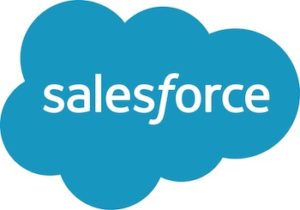 In 2005, there was Good News and Bad News at Salesforce. The good news was that the company was acquiring new customers at a stunning rate. The Bad News: customers were churning in horrific numbers. Like Bruce Cleveland before them, Salesforce’s executive team quickly realized that bringing in new customers couldn’t be end of the story, that there was no way to add enough new customers to survive if they were leaving in greater numbers.
In 2005, there was Good News and Bad News at Salesforce. The good news was that the company was acquiring new customers at a stunning rate. The Bad News: customers were churning in horrific numbers. Like Bruce Cleveland before them, Salesforce’s executive team quickly realized that bringing in new customers couldn’t be end of the story, that there was no way to add enough new customers to survive if they were leaving in greater numbers.
Salesforce didn’t invent Customer Success as a new profession, but the company quickly built what was then the largest CS department in the industry. The group was (and still is) called Customers For Life, and while it was not responsible for renewals, up-sells or cross-sells, it was specifically chartered to address customer retention by increasing user adoption.
Recommended Reading
The History of Customer Success – Part 2
The Definition of Customer Success
The Mission of Customer Success




